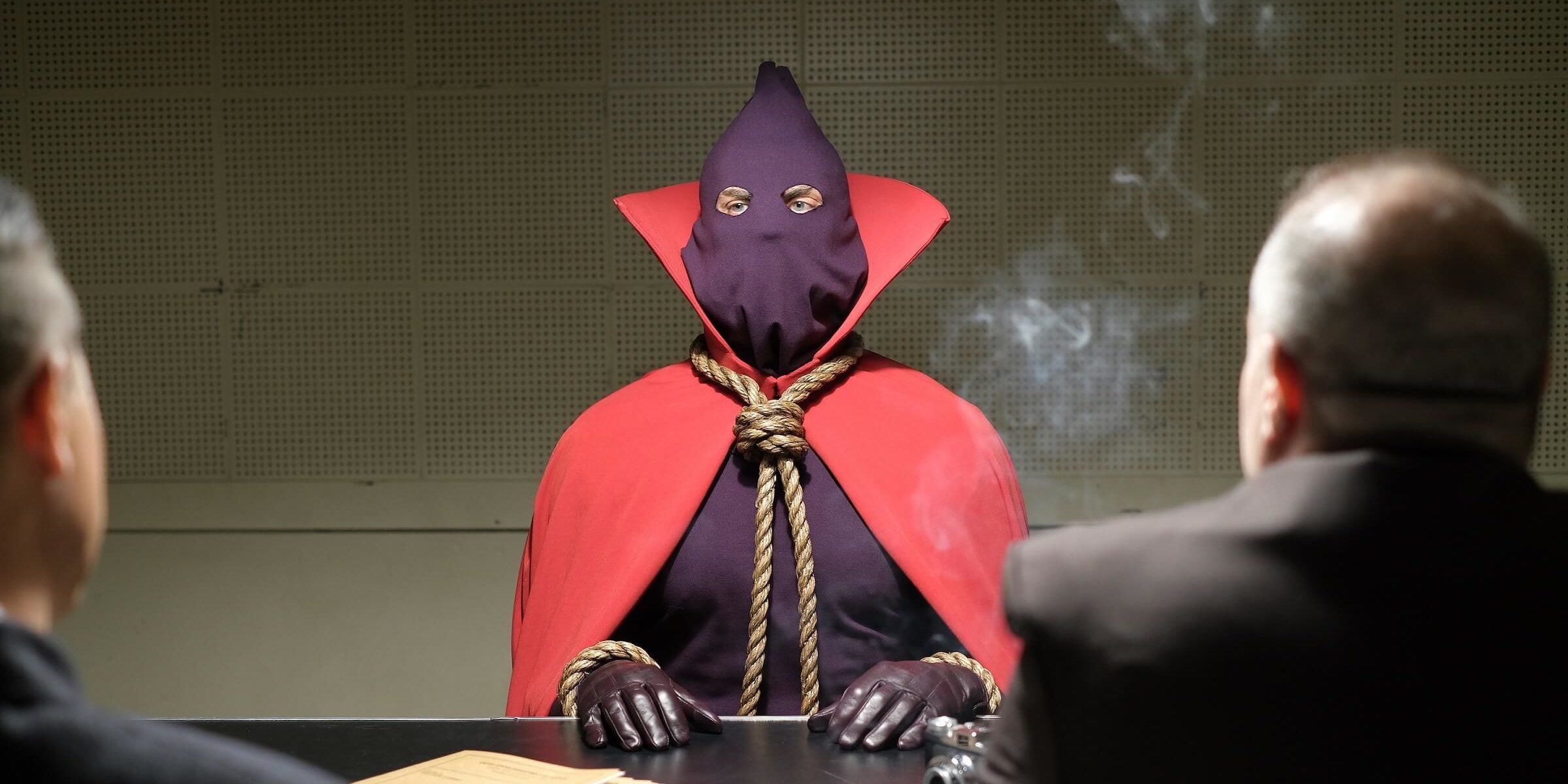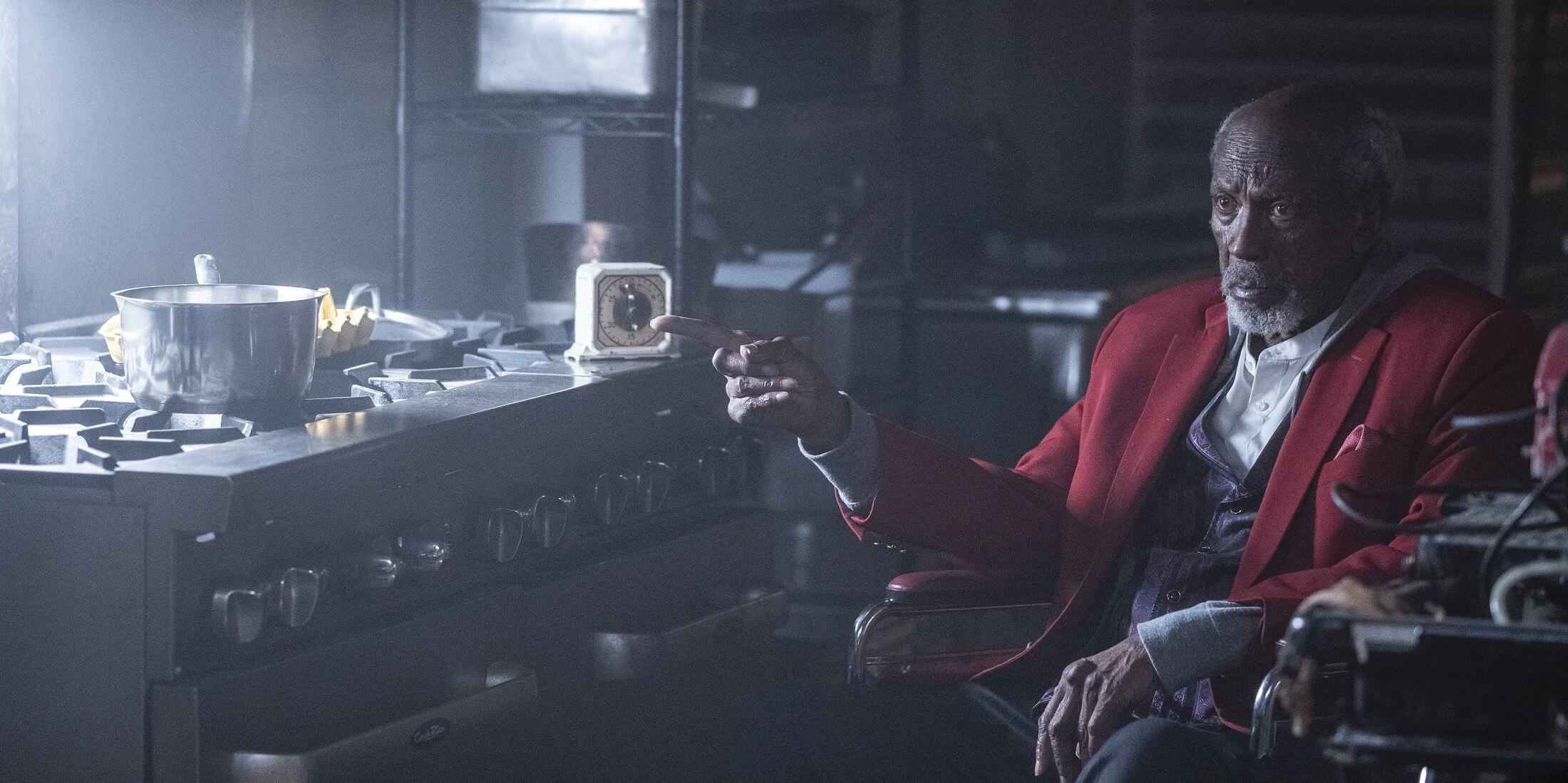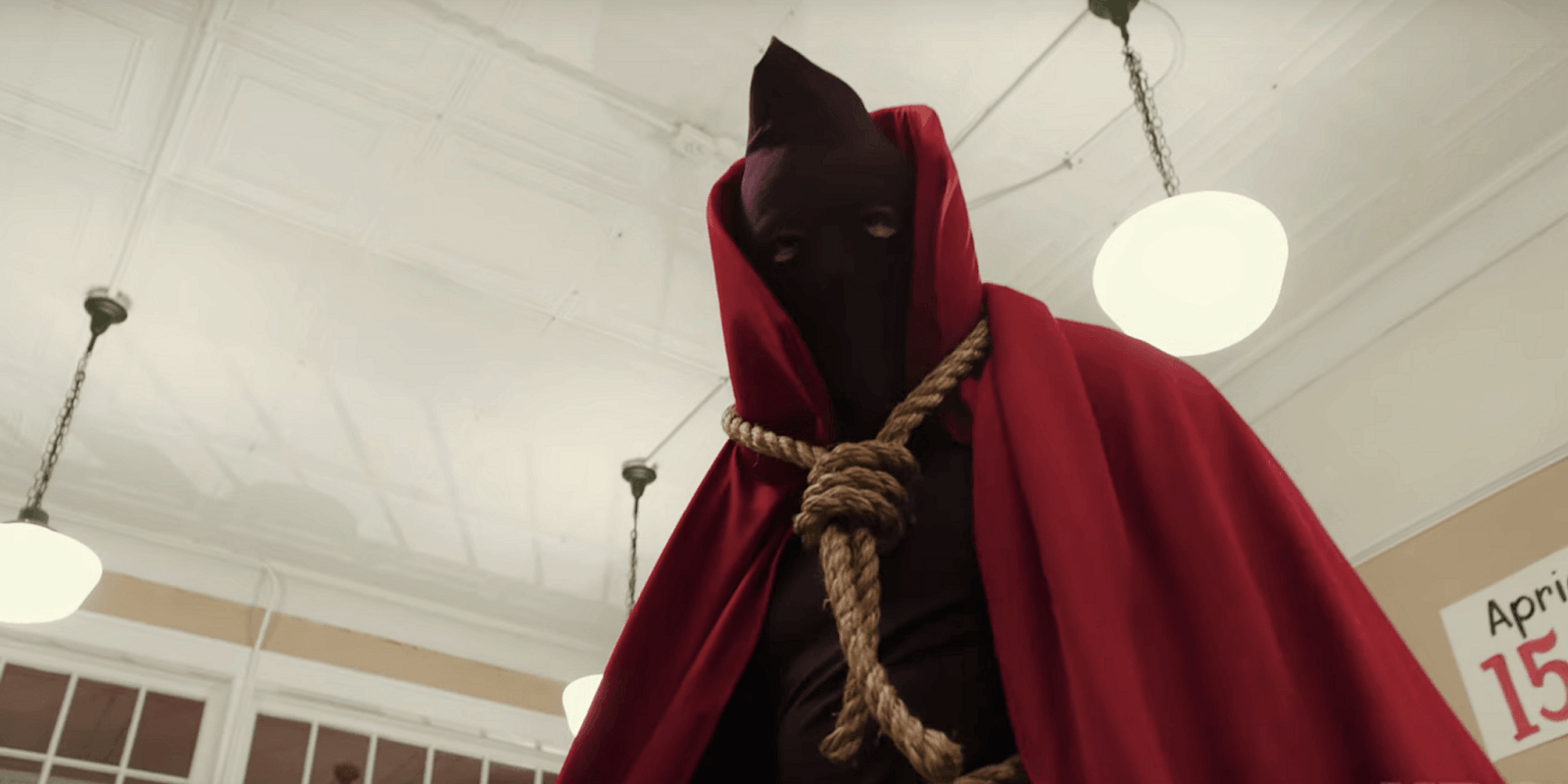“I want you to think about what you’re wearing… The uniform a man wears changes him. Make sure yours changes you for the better.” Watchmen’s sixth episode begins with a solemn celebration of the NYPD uniform, as a young Will Reeves (Jovan Adepo) joins their ranks in 1938. He’ll soon learn that the uniform isn’t necessarily a badge of honor, but the message sticks: The clothes you wear can shape your actions.
The original Hooded Justice was a pastiche of early superhero comics, which in turn drew heavily from masked vigilante stories like Zorro, and from the aesthetic of circus strongmen. Heavily implied to be white and conservative, Hooded Justice was a relic of a pre-spandex era. With a black hood and a noose around his neck, he resembled a medieval executioner with hints of S&M—a lurid detail that made its way into American Hero Story. But this week’s Watchmen turns that idea on its head, revealing that Will Reeves was the real Hooded Justice, and his costume originated during an attempted lynching. Over the course of the episode, a previously silly character evolves into an emotionally compelling comment on racism in America.
Some fans will object to the idea of Hooded Justice getting a reboot, because it undercuts Watchmen’s core idea that masked vigilantes are damaged, ridiculous, and self-absorbed. Will Reeves is a genuinely heroic figure, drawing parallels with Superman. Like Looking Glass, he dons a mask in response to life-changing trauma, but unlike many of Watchmen’s other crime-fighters, he’s driven by a true desire for justice. And he’s actually effective. He’s also the first superhero in the Watchmen timeline, a crucial detail because it echoes a long history of Black innovators creating social movements that are later co-opted by white people. In this case, that’s Captain Metropolis, an attention-seeking jackass whose garish costume barely disguises the man beneath the mask.

The episode’s co-writer Cord Jefferson described Captain Metropolis as a “dilettante,” who is “doing this as a hobby.” Speaking to Vulture, he explained, “My thinking about it was, in the 1930s, who would be seeking justice outside of a courtroom? The most ridiculous superhero is Batman because the idea that a billionaire white guy can’t find justice and so he needs to take to the streets in a bat costume is crazy, right?” The original Watchmen highlighted the absurdity of costumed crime-fighting, but the HBO show creates the right context for us to take Hooded Justice seriously. It makes sense for Will Reeves to wear a mask, and this creates a ripple effect that changes American culture. 70 years later, masked vigilantism is a complicated political issue, and Hooded Justice is unthinkingly portrayed as a white man in American Hero Story, an overblown and inaccurate portrayal of a real person’s life.
“Just like anything in fashion, the simpler the piece, the more difficult it is to design,” costume designer Meghan Kasperlik told us in an interview. “Because it’s literally like, a tunic, a pair of pants, a cape and a hood, as simple as that seems, it took almost the longest of any of the costumes to make.” The fact that episode 6 is mostly in black and white complicated matters. “We needed the option for it to go to color in certain scenes if necessary,” Kasperlik explained. She spent a long time sourcing the right shade of red fabric for Hooded Justice’s cape, while also making sure there was enough textural contrast for his costume to catch the eye in monochrome. She also wanted to create a contrast between the “real” costume and version we see in American Hero Story.

“When I was looking at the graphic novel, I looked at one page and the tunic looked almost like it was purple. Then I looked a few pages later and the tunic looked black. There was a big discussion with Damon [Lindelof] and I about whether it should be purple or black. So for American Hero Story we made the tunic purple, and for the real Hooded Justice we made it black, and I really loved that story point.” Will Reeves’ costume was designed around Watchmen’s guiding principle for superhero outfits: The characters had to plausibly make these clothes themselves. Reeves could put together his costume from scratch, in the same way that Sister Night’s costume is basically a long leather coat and a white shirt. Meanwhile, American Hero Story was meant to be heightened and flamboyant, so we see Cheyenne Jackson wearing an ostentatiously impractical cape.
Hooded Justice’s costume ties into the old tradition of linking superheroes to their nemeses, drawing parallels between his pointed hood and a Klan robe. At the end of the episode, the old Will Reeves (Louis Gosset Jr.) drives the point home by mocking Chief Crawford for keeping his grandfather’s Klan uniform in a closet. “If you’re so proud of your legacy, why’d you hide it?” he asks. Hooded Justice was a lone warrior by necessity, but Crawford and his grandfather were always surrounded by a brotherhood of likeminded allies. There’s an aura of smugness between the men who exchange the Cyclops salute in this episode. The masks and secret identities are like a game to them.

Reeves’ attitude to his own legacy is still unclear. After keeping his identity secret for decades, he presumably feels ambivalent about how Hooded Justice spawned the trend for costumed adventurers. When he meets Angela Abar, he’s openly derisive about her masked alter-ego, probably reminded of his own youthful naivety in the NYPD. But at the same time, his present-day costume hints at his secret identity from the start. As an old man, Will Reeves’ clothes call back to Hooded Justice: A bold red jacket, a purple-ish shirt, and a hoodie. He’s hiding in plain sight.
